Blockchain
Monero P2P Trading Platform Closes and Raises Concerns

Monero P2P trading platform closes and raises concerns within the community of cryptocurrency users who value privacy.
The closure of this significant platform, which had long been a hub for Monero enthusiasts, underscores the challenges and risks facing decentralized exchanges in today’s evolving regulatory landscape.
Monero has gained popularity as a privacy-focused cryptocurrency due to its ability to provide secure and anonymous transactions, making it a preferred choice for users prioritizing privacy.
However, the platform’s closure was attributed to a mix of factors, including increased regulatory pressures, operational challenges, and security vulnerabilities.
This development impacts Monero’s market liquidity and raises questions about the future of decentralized platforms.
We will look into the reasons behind the shutdown, its effect on the Monero community, and the potential future of decentralized cryptocurrency trading platforms in an ever-changing environment.
Understanding Monero and P2P Trading Platforms
Monero (XMR) is a privacy-centric cryptocurrency that aims to provide secure, untraceable, and fungible transactions.
Monero (XMR):
Unlike Bitcoin, which offers pseudo-anonymity, Monero employs advanced cryptographic techniques like Ring Signatures, Ring Confidential Transactions (RingCT), and stealth addresses to ensure transaction privacy. These features make Monero a popular choice among individuals prioritizing financial privacy and anonymity.
P2P Trading Platforms:
Peer-to-peer (P2P) trading platforms enable direct transactions between buyers and sellers without intermediaries, providing a decentralized alternative to traditional exchanges. For privacy-focused cryptocurrencies like Monero, P2P platforms create an environment aligned with users’ desire for anonymity, often offering secure escrow systems, reputation-based trading, and end-to-end encrypted communication.
The Platform’s History:
The platform emerged as a significant player in Monero trading, providing a space where like-minded users could trade directly and securely. Its ease of use and privacy-centric features quickly attracted a loyal user base, making it a critical node in the Monero trading ecosystem. However, its recent closure has left a noticeable gap, compelling traders to seek alternative venues.
Monero P2P Trading Platform Closes Because of Presure Regarding privacy focused trading.
Increased regulatory scrutiny on cryptocurrencies has created a challenging environment for decentralized platforms. Many governments are pushing for tighter controls on crypto exchanges to curb illicit activities.
Regulatory Pressures:
The P2P Monero platform was under immense pressure due to its association with privacy-focused trading. Compliance requirements, such as know-your-customer (KYC) regulations and anti-money laundering (AML) policies, posed significant challenges, prompting the platform’s operators to shut down rather than compromise their values or face legal consequences.
Operational Challenges:
Decentralized platforms require robust infrastructure to handle transactions securely and efficiently. However, maintaining such infrastructure has significant operational challenges, including server management, user support, and technical updates. The Monero P2P platform struggled to keep up with increasing operational demands, particularly as its user base grew. Technical glitches, insufficient resources, and increasing server costs further strained the platform’s sustainability.
Security Concerns:
Security is paramount in any trading platform, but decentralized exchanges face unique challenges. The Monero platform had to combat various security threats, including scams, hacks, and fraudulent listings. Despite employing security measures like escrow systems and reputation-based trading, malicious actors still exploited vulnerabilities. Rising security issues compromised user funds and eroded trust in the platform, accelerating its decline.
Impact on the Monero Community
Liquidity Challenges:
The closure of the P2P trading platform has affected Monero’s liquidity, particularly in the P2P market segment. With fewer active marketplaces supporting Monero, traders have experienced challenges finding reliable platforms, which has reduced trading activity and liquidity. This decline makes it harder for buyers and sellers to conduct transactions quickly and at favourable prices.
Alternative Trading Solutions:
Despite the closure, Monero trading continues through various other avenues. Decentralized exchanges (DEXs) like Bisq and open-source platforms like LocalMonero offer alternative trading solutions. Centralized exchanges (CEXs) like Kraken and Binance also facilitate Monero trading, albeit with varying degrees of privacy. OTC (over-the-counter) markets and private trading networks also provide options for traders seeking more personalized trading experiences.
User Trust and Confidence:
The sudden shutdown has shaken user confidence in decentralized platforms, particularly those prioritizing privacy over compliance. Many users have expressed concerns about the reliability and security of P2P platforms, prompting a shift towards more regulated exchanges or private trading networks. Restoring user trust will require significant improvements in platform security, transparency, and regulatory compliance.
Parrot Bamboo said at Binance Square:
📣 LocalMonero, the largest peer-to-peer Monero trading platform, announced that it is closing after approximately 7 years of operation. $XMR

The Future of Decentralized Cryptocurrency Platforms
Regulatory Compliance:
For decentralized platforms, regulatory compliance is still a major obstacle. A careful balance must be struck between navigating changing international rules and protecting user privacy.
Platforms must adopt innovative compliance strategies, such as decentralized KYC protocols or community-driven governance models, to remain operational without compromising their core values.
Security Innovations:
Security innovations must be prioritized on decentralized platforms to avert security breaches and restore confidence.
Implementing advanced encryption, multi-signature wallets, and decentralized identity verification can enhance platform security.
Additionally, community-based security audits and bug bounty programs can help identify and address vulnerabilities proactively.
Decentralized Exchange Development:
The growth of decentralized exchanges (DEXs) signifies shifting towards a more secure and user-centric trading model. DEXs like Uniswap and Bisq are gaining traction due to their non-custodial nature and robust security features. However, challenges such as low liquidity, user experience issues, and regulatory uncertainty still hinder their widespread adoption.
Improving cross-chain interoperability, incentivizing liquidity providers, and simplifying user interfaces could accelerate DEX development.
Final Thoughts and FAQ:
The closure of a prominent Monero P2P trading platform has highlighted the complexities and challenges of operating in a rapidly changing regulatory environment. While privacy-centric cryptocurrencies like Monero appeal to users seeking anonymity, platforms supporting these currencies must navigate a delicate balance between compliance and user privacy. The shutdown has affected Monero’s liquidity and raised concerns within the community, but alternatives such as decentralized exchanges and private trading networks still offer viable trading solutions. Moving forward, decentralized platforms must prioritize security, compliance, and innovation to regain user trust and continue providing safe, reliable environments for peer-to-peer trading. The future of decentralized trading depends on striking the right balance between privacy, security, and adaptability to an evolving regulatory landscape.
FAQs
Q.: Why did the Monero P2P trading platform close?
A.: The platform cited regulatory pressures, security concerns, and operational challenges as primary reasons.
Q.: What alternatives exist for Monero P2P trading?
A.: Decentralized exchanges (DEXs) like Bisq and other P2P platforms still support Monero trading.
Q.: How does this closure affect Monero trading?
A.: It may reduce liquidity and impact confidence in P2P platforms.
Q.: What makes Monero unique among cryptocurrencies?
A.:Monero is known for its strong privacy features, such as RingCT and stealth addresses.
Q.: Is Monero still safe to trade?
A.: Yes, trading Monero remains safe, provided users utilize trusted platforms with robust security features.
Blockchain
Real Token Positions Itself as a Web3 Identity & Asset Layer With New On-Chain Utility Expansion
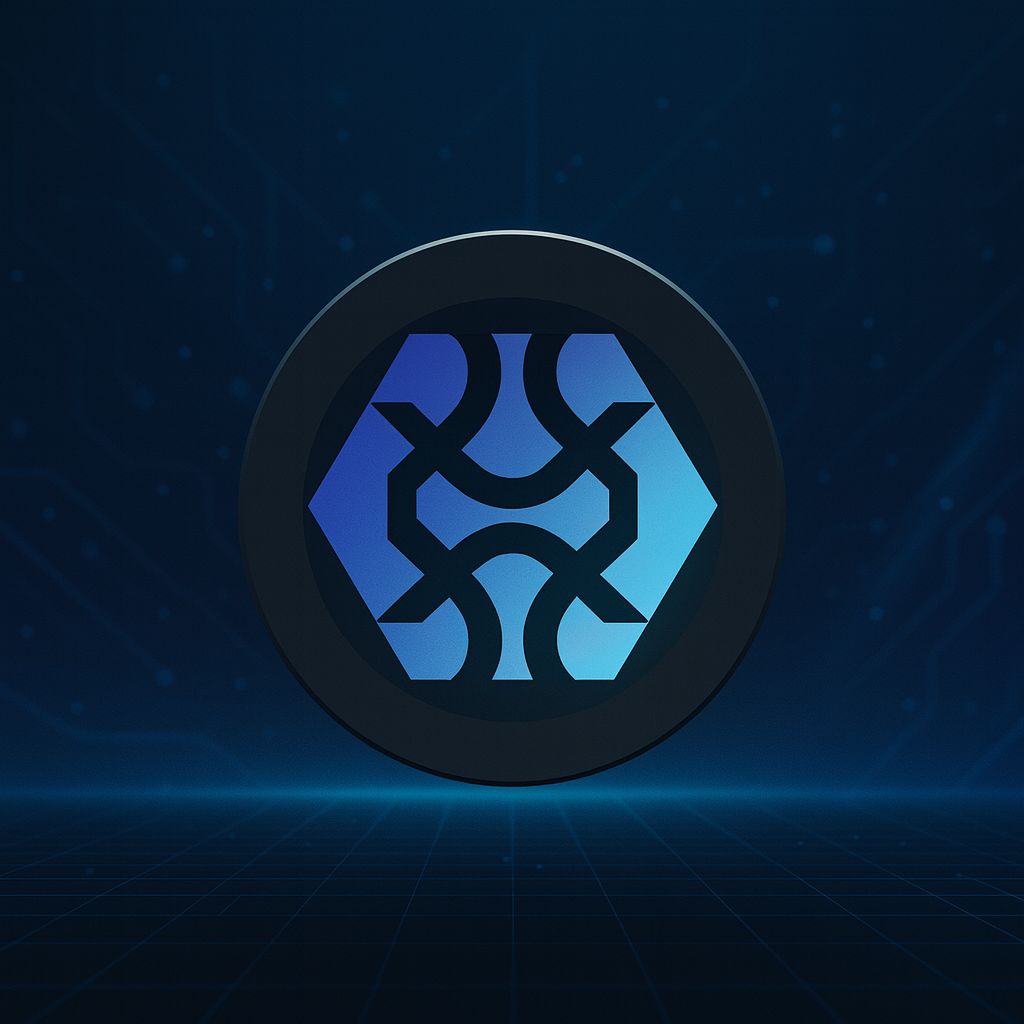
Real Token (REAL), the native asset powering the Real Chain ecosystem, is emerging as a foundational component of a decentralized identity, verification, and asset-backed tokenization network designed for real-world applications. The project continues gaining traction as users explore its blended approach to authentication, multi-asset registration, and trust-layer infrastructure across Web3.
A Growing Identity Layer for Web3
Real Chain operates as a blockchain protocol focused on secure digital identities and asset verification. At its core is the Real ID system — a user-controlled, on-chain identity model enabling permissioned access, verifiable credentials, and cross-platform authentication without relying on centralized databases.
REAL, the protocol token, functions as the economic engine behind identity validation, staking, and node participation. It is also used to facilitate network fees, reward verification services, and anchor trust mechanisms across the platform.
Asset Registration and the “Proof of Realness” Standard
A key element of Real Chain is its asset-registration infrastructure, which allows users and institutions to tokenize physical or digital assets with cryptographic authenticity. This emerging standard — often referred to by the community as Proof of Realness — underpins:
- Tokenized records for property or collectibles
- Secure digital certificates
- Authentication for brands and enterprises
- Verifiable ownership records across marketplaces
REAL token staking reinforces this verification layer by ensuring validators maintain network integrity.
REAL Utility Expands With New Protocol Features
The ecosystem continues to roll out additional functionality, including:
- Upgraded validation modules to enhance identity scoring
- Smart-contract-based asset vaults for issuing traceable digital proofs
- Integration pathways for Web2 platforms, enabling businesses to link their identity systems with Real Chain
- A governance framework that allows token holders to influence protocol upgrades
As adoption increases, REAL is positioning itself as both the governance asset and operational currency of an identity-driven blockchain framework.
Market Outlook: Identity and Verification Gaining Momentum
The broader digital identity sector has seen accelerating interest as enterprises explore decentralized verification solutions. Real Chain is attempting to capture this demand by combining utility-based token economics with real-world authentication infrastructure.
REAL holders benefit from a growing set of on-chain functions including validation rewards, voting rights, and participation across emerging verification markets.
With identity-layer protocols gaining relevance across DeFi, enterprise blockchain, and tokenized commerce, Real Token is shaping itself as a contender within the niche of secure, interoperable Web3 identity systems.
Blockchain
Blazpay Crypto Presale Goes Live At $0.0146875 as TRON (TRX) and Avalanche (AVAX) Drive Momentum in New Crypto Coins
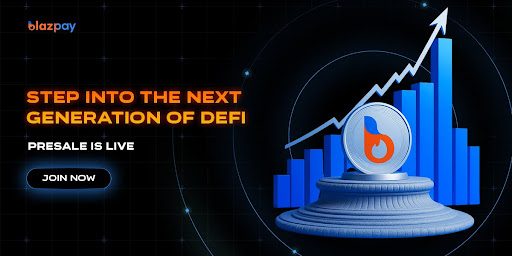
As major Layer-1 networks like TRON (TRX) and Avalanche (AVAX) continue gaining momentum with fresh upgrades, rising adoption, and strong price performance, investors are now weighing established market leaders against the newest high-growth opportunities. While TRX benefits from enhanced EVM compatibility and Revolut integration, and AVAX accelerates with a surge in active wallets and subnet expansion, attention is rapidly shifting toward emerging presale tokens showing real utility.
Among these rising new crypto coins, Blazpay (BLAZ) has stepped into the spotlight as Phase 5 of its presale goes live at $0.0146875. With over 93% of tokens already sold, the project has raised $1.95M and continues to attract early-stage token holders looking for practical utilities, AI-powered tools, and one of the final discounted entry points before price adjustments.
Blazpay Phase 5 Crypto Presale Overview
Blazpay’s Phase 5 crypto presale represents a pivotal moment for early-stage token holders seeking high-potential new crypto coins. With the majority of tokens already sold, scarcity and momentum are driving interest. Its low entry cost and rapid uptake have placed Blazpay prominently among the best presale crypto opportunities right now.
Phase 5 allows token holders to participate before listing on DEX and CEX platforms, ensuring they capture potential upside. The presale’s strong completion rate demonstrates market confidence in Blazpay’s utilities and long-term viability.
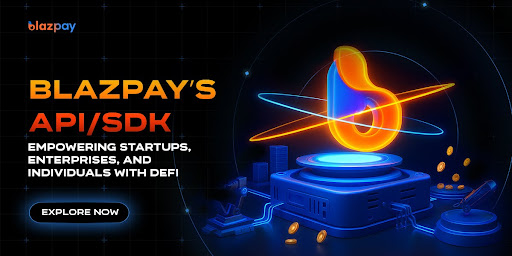
Utilities And Ecosystem
Blazpay stands out among new crypto coins with an ecosystem built for practical use and long-term adoption. Its AI-powered BR SDK equips developers with tools for trading, analytics, and automation, while unified rewards gamify engagement, turning activity into points, yield, and perks. Multichain access ensures fast, low-fee transactions, and perpetual trading features provide early exposure to AI-driven tools. These combined utilities make Blazpay a compelling choice for early-stage token holders seeking both functional value and speculative upside.
Referral Rewards – Instant USDT Incentives
Blazpay’s referral system offers immediate rewards, paying out USDT as soon as a referral joins the presale. Unlike traditional programs that require extended vesting periods, Blazpay’s viral referral structure ensures users earn instantly. As participants invite others, their rewards compound over time, strengthening both their personal holdings and the overall ecosystem.
Referral engagement drives adoption, increases liquidity, and maintains momentum throughout the presale. For token holders evaluating new crypto coins, this referral program adds a tangible income stream, enhancing Blazpay’s appeal as a presale cryptocurrency and a top choice right now.
Blazpay Price Prediction And Token Holder Scenario
Analysts predict Blazpay’s Phase 5 presale could reach $0.018–$0.022 by the end of this phase, with listing prices potentially hitting $0.04–$0.06. Over the next 12 months, the token could trade between $0.10–$0.18, driven by the adoption of BR SDK utilities, unified rewards, and multichain features.
A $1,500 investment scenario illustrates the potential upside. At the current presale price of $0.0146875, a token holder would acquire approximately 127,659 BLAZ tokens. If the listing price reaches $0.04–$0.06, the portfolio value could rise to $5,106–$7,659, providing a 3x–5x ROI. Beyond listing, Blazpay’s ecosystem utilities offer long-term growth potential, reinforcing its position as a top new crypto coin for early-stage token holders.
How to Buy Blazpay Presale Tokens
Acquiring Blazpay tokens is straightforward for both new and experienced crypto token holders. Visit the official Blazpay presale website, connect your wallet (MetaMask, Trust Wallet, or similar), select your preferred payment currency (USDT, ETH, or BNB), enter the desired BLAZ token quantity, approve the transaction in your wallet, and claim your tokens after the presale concludes.
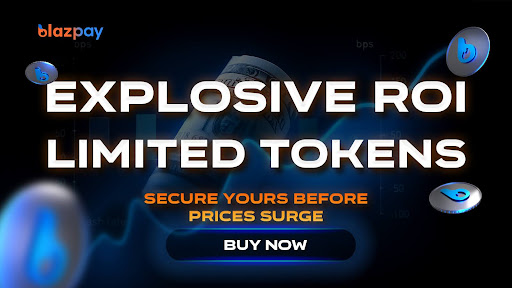
TRON (TRX) Gains Momentum as New Tech Upgrades and Revolut Integration Boost Utility
TRON (TRX) is trading at $0.3247, posting a 0.8% daily and 3.1% weekly rise, bringing its market cap to roughly $30.75 billion. The network recently deployed JavaTron 4.8.1 on its Nile Testnet, introducing performance upgrades, enhanced security, and improved EVM compatibility. Founder Justin Sun highlighted the project’s push for transparency and teased more updates ahead. TRON also secured a major adoption boost after its integration with Revolut, giving European users access to TRX staking and stablecoin services, a move that could expand its mainstream reach.
Avalanche (AVAX) Sees Strong Uptick as Active Wallets Surge and Subnet Growth Accelerates
Avalanche (AVAX) trades at $27.16, up 8.9% in 24 hours and 3.9% over the week, with a market cap near $11.45 billion. The network recently hit 2.2 million active wallets, fueled by hit projects like MaplestoryU and The Arena, marking an impressive 400% monthly growth. The Avalanche Foundation is doubling down on expansion by allocating a portion of its $100M culture fund to memecoins and rolling out a $290M subnet incentive program aimed at driving scalable Web3 development. Meanwhile, DeFi activity is climbing fast, TVL jumped nearly 40% following the performance-boosting Octane upgrade.
Conclusion
While TRON and Avalanche maintain strong market positions and provide stability, Blazpay emerges as the most aggressive presale token right now. Its BR SDK, unified and gamified rewards, multichain infrastructure, and viral referral system make it uniquely positioned for early-stage growth and long-term adoption. Token holders searching for high-potential new crypto coins are increasingly prioritizing Blazpay over established networks due to its combination of early-stage upside, functional utilities, and strong community engagement.
Blazpay is not only a promising presale cryptocurrency but also a practical platform for developers, traders, and token holders seeking exposure to innovative blockchain tools. With Phase 5 nearly sold out, immediate participation ensures potential access to one of the most compelling new crypto coins of the year.
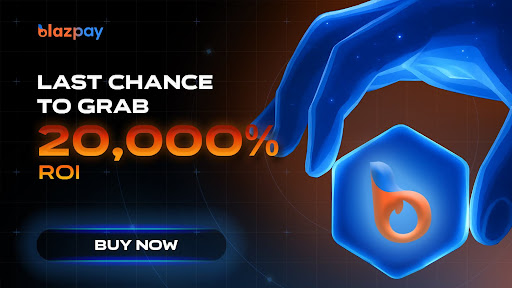
Join the Blazpay Community
Website: www.blazpay.com
Twitter: @blazpaylabs
Telegram: t.me/blazpay
FAQs
Is Blazpay the best presale token right now?
Yes, Blazpay Phase 5 combines BR SDK, unified rewards, and strong market momentum, making it a leading presale cryptocurrency right now.
How does the referral rewards system work?
Participants earn instant USDT for each successful referral, with rewards compounding over time as new users join the ecosystem.
What is BR SDK, and how does it benefit developers?
BR SDK provides AI-powered tools for building and integrating decentralized applications, enabling seamless deployment and enhanced functionality.
How do TRON and AVAX compare to Blazpay for token holders?
TRON offers stability and mature adoption, AVAX delivers scalability and DeFi integrations, but Blazpay provides early-stage growth and functional utilities for presale token holders.
Blockchain
Top 7 Best 100x Crypto Opportunities for 2025 – Blazpay Leads Presales Ahead of BTC, ETH, SOL And ADA

The crypto market in 2025 is buzzing with innovation as new protocols, DeFi platforms, and AI-driven ecosystems capture investor attention. Among the emerging opportunities, certain tokens stand out for their growth potential, advanced utilities, and multi-chain interoperability. As of November 2025, market watchers are highlighting Blazpay Phase 5 as a leading contender in the race to become the Best 100x crypto offering unique SDK integrations, perpetual trading features, and gamified rewards that differentiate it from other blockchain projects.
- Blazpay Phase 5: Best 100x Crypto Opportunity
Blazpay has launched Phase 5 of its presale, marking a major milestone in its journey toward creating a fully unified crypto ecosystem. With a focus on AI tools, SDK integration, and perpetual trading, Blazpay offers a platform where developers and users can interact seamlessly across multiple blockchain networks. Its gamified rewards system incentivizes engagement, providing both short-term activity benefits and long-term value accumulation.
Referral Rewards
Blazpay’s referral program enhances community growth and user adoption. Participants receive bonuses based on referrals, encouraging wider network engagement. This system rewards proactive participants, making early adoption a compelling strategy for those looking to maximize their holdings during the Phase 5 presale.
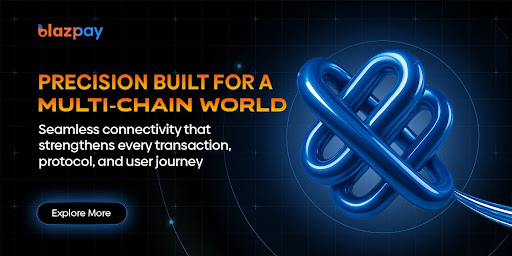
Utilities and Real-World Use Cases
The platform’s SDK allows developers to build custom integrations and decentralized applications, while merchants can utilize Blazpay for payment acceptance. The network supports staking, liquidity provision, and other DeFi protocols, ensuring multiple avenues for value creation. Blazpay’s unified services, including cross-chain compatibility, provide a robust foundation for long-term adoption and ecosystem expansion.
Price Scenario & Future Forecast
Phase 5 presents a strong opportunity for early participants. Projections indicate potential growth in 2025 as adoption increases across various use cases. Looking toward 2030, Blazpay’s integration of AI, SDK tools, and multi-chain services positions it as a top contender among emerging presale cryptocurrencies. A $3,000 scenario illustrates how strategic early participation could translate into meaningful returns over time.
How to Buy Blazpay
Acquiring Blazpay tokens is simple: users can register on the official platform complete verification, and purchase tokens through supported payment methods. Early participation in Phase 5 ensures acquisition at the current presale price. Visit the official website to participate before the next phase price increase.
- Bitcoin (BTC): Digital Gold
Bitcoin continues to be the leading store of value in the cryptocurrency market. Its decentralized structure and widespread adoption make it a benchmark for digital assets. While Bitcoin does not offer presale opportunities, its ongoing integration with DeFi protocols and cross-chain platforms strengthens its utility. Analysts expect Bitcoin to maintain a critical role as a hedge and foundational asset across diversified crypto portfolios, securing its position as a must-watch project in 2025.
- Ethereum (ETH): Smart Contract Pioneer
Ethereum remains at the forefront of decentralized application development, offering a robust ecosystem for smart contracts, NFTs, and DeFi protocols. Its evolving Layer-2 solutions and cross-chain capabilities allow developers to deploy scalable applications efficiently. Ethereum’s ongoing innovation ensures continued relevance and positions it as a strong choice for those monitoring the best 100x crypto projects with practical applications.
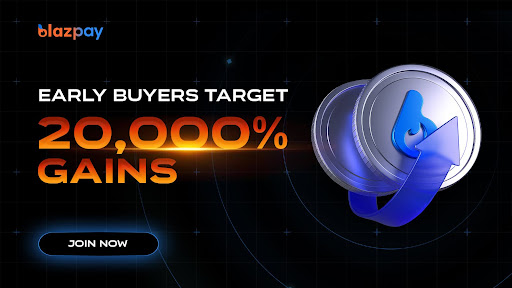
- Solana (SOL): Speed and Scalability
Solana is known for high-performance blockchain solutions, offering fast transaction processing and low fees. It supports a wide range of decentralized applications, particularly in gaming and NFT platforms. Solana’s compatibility with multi-chain networks and perpetual trading features makes it a strong contender for developers seeking scalable and interactive ecosystems.
- Cardano (ADA): Security and Sustainability
Cardano emphasizes secure and sustainable blockchain development. Its layered architecture separates computation from settlement, enhancing smart contract reliability. Cardano’s unified service approach ensures seamless integration for developers and users alike. The platform’s focus on interoperability, governance, and ecosystem expansion makes it a strong candidate for presale and new crypto coin projects in the near term.
- Avalanche (AVAX): High-Speed Smart Contracts
Avalanche delivers scalable and interoperable smart contract capabilities. Its consensus protocol supports fast, secure transactions, making it ideal for decentralized applications that demand high throughput. Avalanche’s focus on cross-chain functionality and perpetual trading mechanisms positions it as a versatile blockchain for new crypto coins and presale platforms, aiming to unify user experiences across ecosystems.
- TRON (TRX): Entertainment and DeFi
TRON offers a high-performance blockchain for entertainment, gaming, and DeFi applications. Its network is optimized for rapid transaction processing and supports gamified reward structures for users and developers alike. TRON’s interoperability with other networks and focus on unified service deployment make it a compelling choice for those exploring strategic crypto presales and perpetual trading solutions.
Final Thoughts – Don’t Miss Out
Blazpay Phase 5 exemplifies a presale cryptocurrency that combines AI tools, SDK utilities, and perpetual trading to create a fully integrated ecosystem. Early participation offers potential advantages in a $3,000 scenario, highlighting its position as one of the best 100x crypto opportunities available today. While established cryptocurrencies like Bitcoin, Ethereum, and Solana continue to provide robust ecosystems, Blazpay’s presale advantages and multi-utility services make it a unique proposition. Act now to maximize opportunities before Phase 5 concludes, and stay ahead in the evolving crypto market.
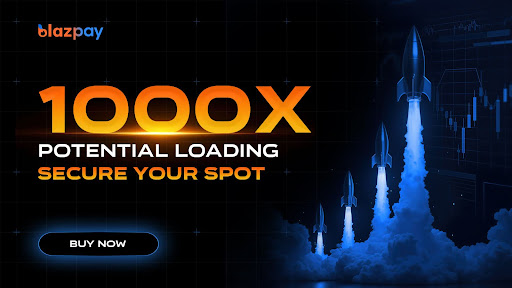
Join the Blazpay Community
Website: www.blazpay.com
Twitter:@blazpaylabs
Telegram:t.me/blazpay
-

 Crypto3 years ago
Crypto3 years agoCardalonia Aiming To Become The Biggest Metaverse Project On Cardano
-

 Press Release5 years ago
Press Release5 years agoP2P2C BREAKTHROUGH CREATES A CONNECTION BETWEEN ETM TOKEN AND THE SUPER PROFITABLE MARKET
-
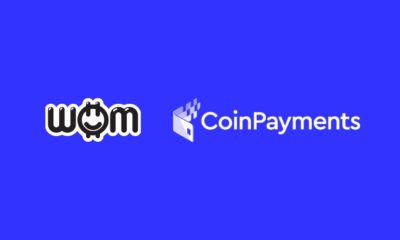
 Blockchain5 years ago
Blockchain5 years agoWOM Protocol partners with CoinPayments, the world’s largest cryptocurrency payments processor
-
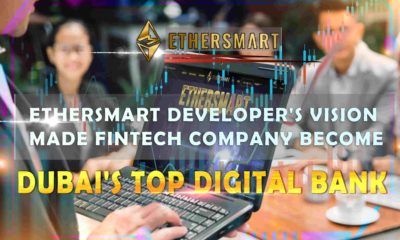
 Press Release5 years ago
Press Release5 years agoETHERSMART DEVELOPER’S VISION MADE FINTECH COMPANY BECOME DUBAI’S TOP DIGITAL BANK
-

 Press Release5 years ago
Press Release5 years agoProject Quantum – Decentralised AAA Gaming
-

 Blockchain5 years ago
Blockchain5 years agoWOM Protocol Recommended by Premier Crypto Analyst as only full featured project for August
-
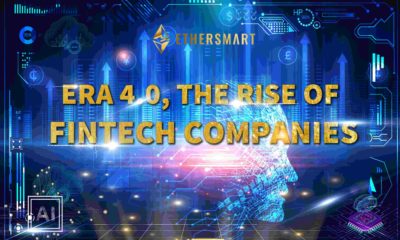
 Press Release5 years ago
Press Release5 years agoETHERSMART DEVELOPER’S VISION MADE FINTECH COMPANY BECOME DUBAI’S TOP DIGITAL BANK
-

 Blockchain6 years ago
Blockchain6 years ago1.5 Times More Bitcoin is purchased by Grayscale Than Daily Mined Coins






